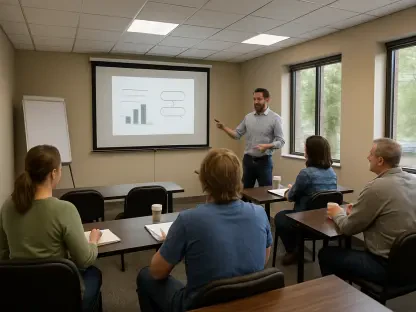In an era where education systems face unprecedented challenges, a groundbreaking initiative has emerged to ensure that the voices of educators shape the narrative around K-12 schooling in Wisconsin. With funding shortages, declining enrollment, and stagnant student achievement casting long shadows over schools, there’s a pressing need for journalism that captures both the struggles and the often-overlooked triumphs within classrooms. A leading newspaper has taken a bold step to address this by creating two teacher advisory boards, one based in Milwaukee and another representing educators from across the state. This move aims to integrate firsthand insights from teachers into education reporting, ensuring that stories reflect the real dynamics of schools while addressing the concerns of parents and students. By fostering collaboration with those on the front lines, the initiative seeks to produce coverage that is not only accurate but also deeply relevant to the community it serves.
The formation of these advisory boards comes at a critical juncture for Wisconsin’s education landscape. Teachers, as key stakeholders, bring unique perspectives that can help highlight underreported issues and provide a more nuanced understanding of daily classroom experiences. The goal is to create a balanced portrayal of education by focusing on both persistent challenges and inspiring successes. This effort also recognizes the diversity within the teaching profession, drawing members from various grades, subjects, and school types, including public, private, and charter institutions. Such inclusivity ensures that the resulting journalism captures a wide array of viewpoints, avoiding a narrow or one-sided depiction of the state’s schools. By tapping into these varied experiences, the newspaper aims to bridge the gap between media narratives and the lived realities of educators, ultimately fostering trust and relevance in its reporting.
Bridging Media and Classroom Realities
This initiative is structured to facilitate meaningful dialogue between journalists and educators through regular, off-the-record meetings held three times a year, each lasting up to two hours with virtual attendance options available. Facilitated by dedicated education reporters, these discussions will focus on reviewing past coverage, identifying topics that deserve more attention, and gaining deeper insights into classroom challenges and innovations. Importantly, the privacy of participating teachers is protected, with feedback shaping editorial priorities without direct attribution unless explicit permission is granted. The commitment from board members spans one year, with meetings set to commence shortly after the selection process concludes. This thoughtful design underscores a dedication to creating a safe space for honest input while ensuring that the resulting journalism remains impactful and reflective of current educational needs.
Looking back, the launch of these teacher advisory boards marked a proactive effort to enhance the quality and authenticity of education reporting in Wisconsin. By centering educators as vital contributors, the initiative paved the way for stories that resonated more deeply with the community. It addressed the dual need for highlighting systemic issues while celebrating classroom victories, setting a precedent for how media can collaborate with practitioners to inform the public. Moving forward, the focus shifted to expanding such models of engagement, encouraging other regions and publications to adopt similar partnerships. The emphasis remained on sustaining this dialogue to adapt to evolving educational landscapes, ensuring that journalism continues to serve as a powerful tool for understanding and improving K-12 education through informed, inclusive narratives.








